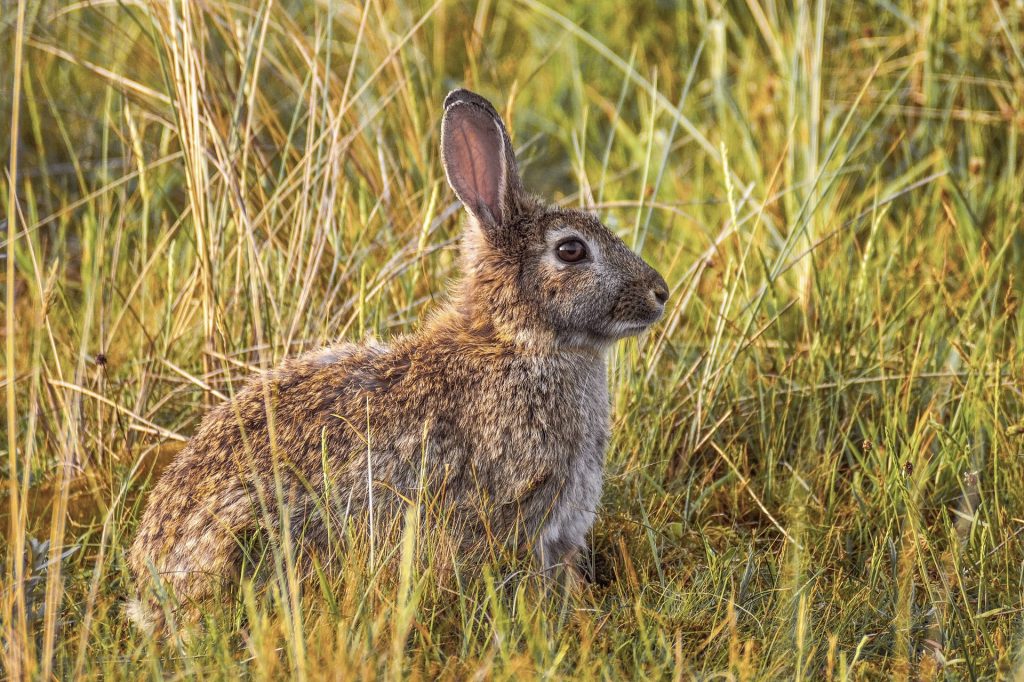BY TYLER FRANTZ
There’s no denying the merits of a well-trained dog when hunting cottontails.
As the steady baying of a beagle rings out like sweet music, a hot trail is pursued and rabbits are predictably circled back towards hunters for a close range shot.
Unfortunately, many hunters don’t own rabbit dogs. Therefore, they must surrender to doing things the old fashioned way by calling a few buddies together and putting boot leather on the ground.
Rabbits have fairly liberal seasons and bag limits. They can be hunted over a period of three windows, which span the duration of late October through nearly the end of February, with a daily bag limit of four per hunter.
Lengthy seasons are the result of their amazing ability to reproduce over a short period of time.
According to the Pennsylvania Game Commission, each mature female bears an average of four litters per year, with each litter ranging from two to nine young, with five the average.
This means that each year there are plenty of rabbits for the taking, but many believe the best time to hunt them is during the latter part of the season when a fresh dusting of snow blankets the ground. Rabbits can be a lot of fun to pursue, and hunters without a dog can still experience a great deal of success, granted they work together and know what to look for.
Cottontails love swampy, brushy terrain, and can be found wherever thick strips of cover are located near a quality food source.
In wintertime, rabbits feed on buds, twigs, bark, and wild raspberry canes. If there is a steady food supply and adequate security cover, rabbits won’t have any reason to venture far.
Keeping this in mind, prime target locations for bunnies include old fencerows, grown-up field edges, low-brush creek beds, and plots dense with young evergreens.
Another terrific place to find rabbits, if accessible, is an old abandoned home site with dilapidated outbuildings. All of these areas offer sanctuary cover, as well as plenty of obscure burrows for cottontails to hole up when threatened.
Looking back over many years of small game hunting, some favorite locations for consistently getting into cottontails have always featured sloped hillsides with new growth vegetation, or low-lying gullies, thick with briars, surrounding a water source. These areas include neglected pasturelands and recently timbered hillside strips no more than 50 yards wide.
What’s really nice about these locations is that they are generally bordered by fields or old logging roads, which offer the perfect set-up for 3 or 4 hunters to work as a team in order to get things moving. They also provide the necessary visibility required for organized rabbit drives.
The best way for a small group of hunters to cover sloped hillsides for bunnies is for one or two people to walk through the cover, while two others stand and flank. These roles should be alternated so that everyone gets a fair chance at each task, and it’s good hunting etiquette for each person to get a turn battling the briars.
Designated standers should be posted high at the end of the patch to catch any rabbits that run straight out ahead on the upper edge of the cover strip. Another hunter should flank the bottom field edge or logging road, being sure to stay well ahead of the drivers where he can see the hillside for rabbits running low.
Many times, even the drivers will get a few shots at rabbits holding tight while working through the brushy terrain.
Though they can run pretty quickly, most rabbits bound off a few paces and stop for a brief moment before taking off again. Drivers should stay ready and keep their eyes open for bunnies slipping ahead in the drive, which can offer a quick shot.
It is also important for drivers to thoroughly scour any areas a rabbit might be hiding, because if they don’t, rabbits often let hunters walk right past them. This includes checking brush piles, clusters of thick briars, low hanging evergreen boughs, and even old piles of rotting lumber or rusted farm equipment.
A few fresh inches of snow really helps the process, as it makes seeing the rabbits easier, since their brown coats contrast well against the white landscape. And for some reason, it seems as though cottontails are always more apt to be out and about on sunny mornings after a recent snowfall.
For those looking for small game hunting opportunities on a Saturday morning, consider calling a few friends and heading out to try for some excellent long-eared table fare.
No dog is needed to be successful, but for those who get the urge, they can always give a few howls while struggling through the briars.
Contact the writer: wildlife@timesshamrock.com




